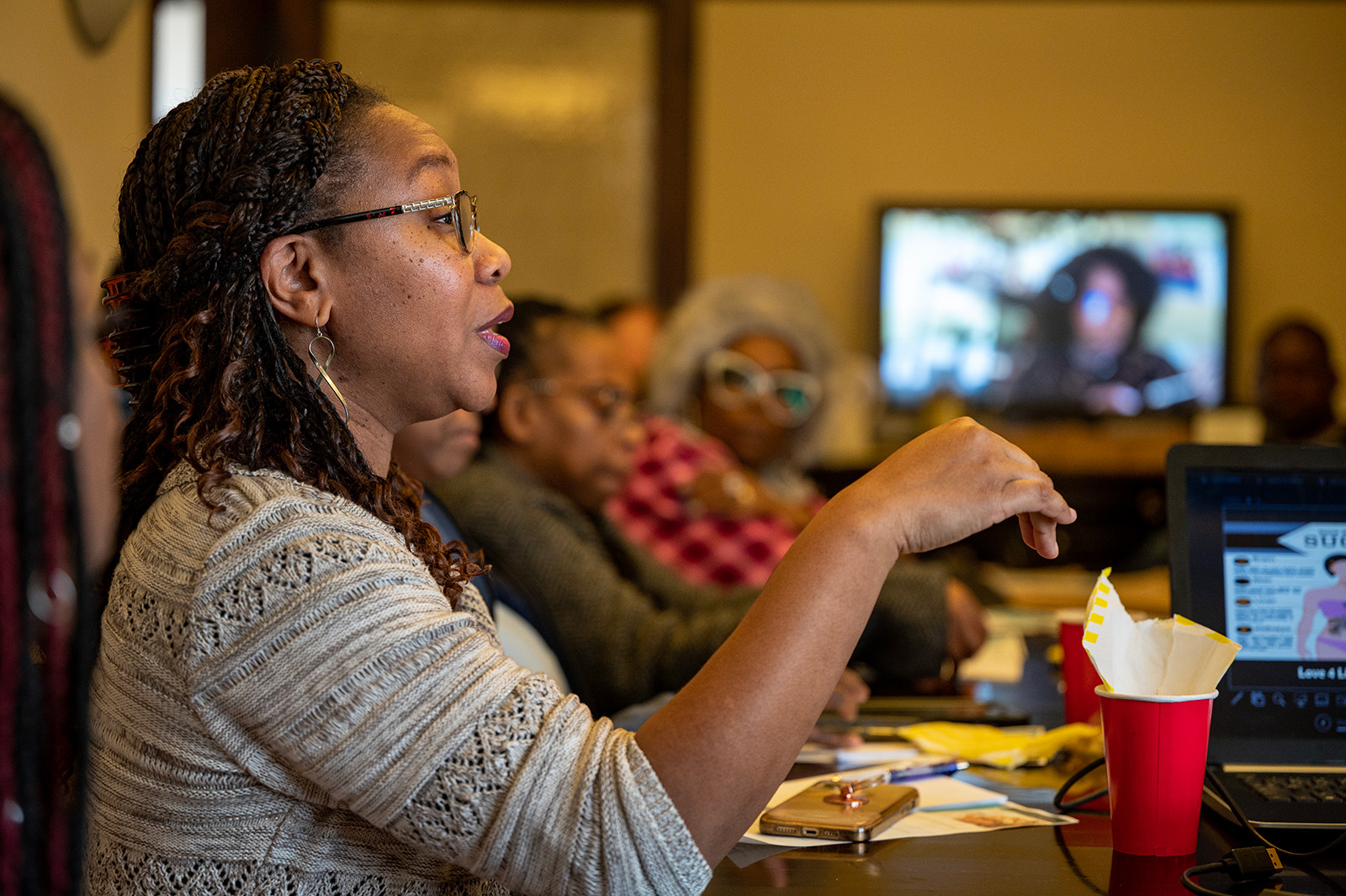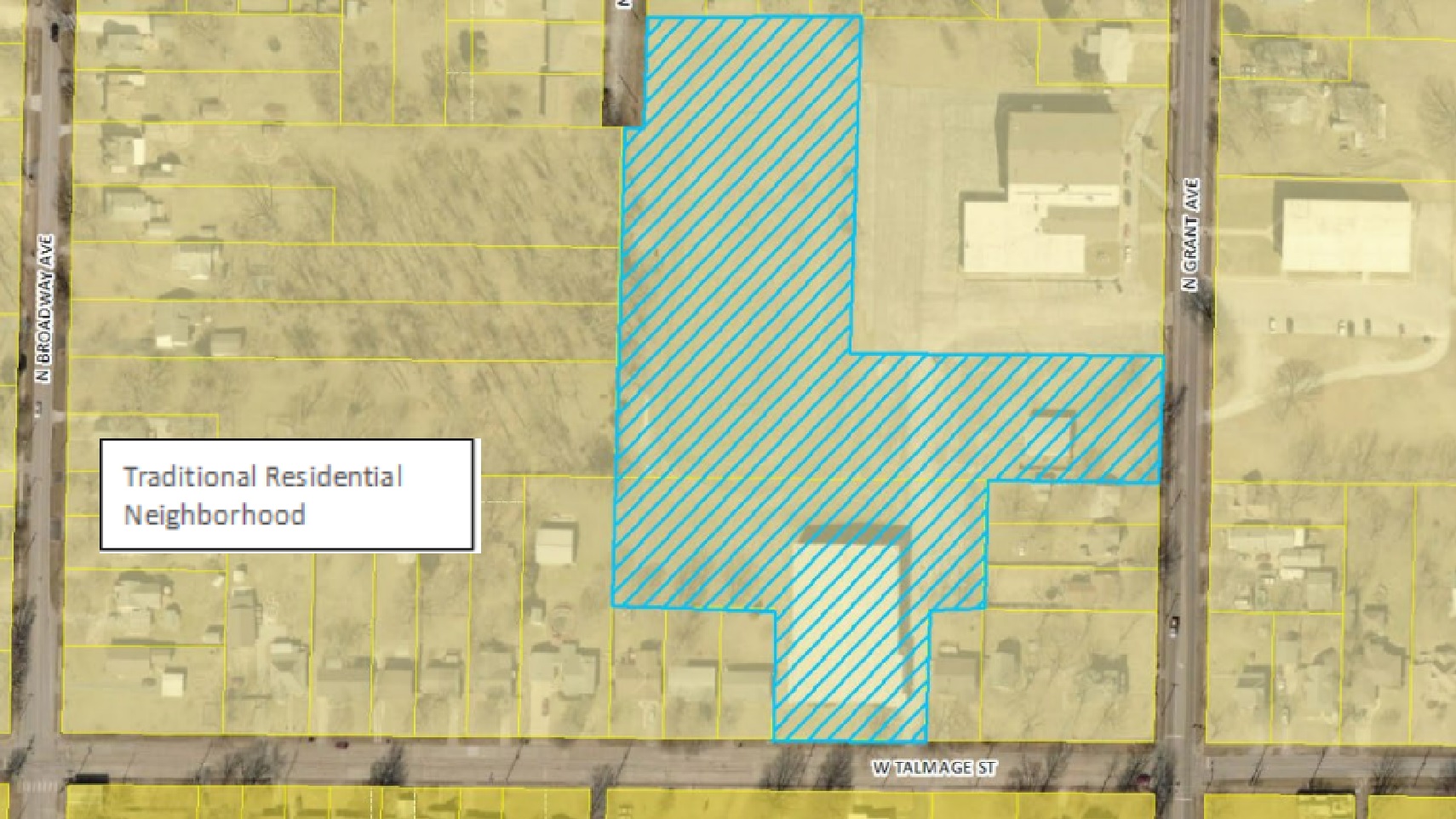Developer Mike Stalzer walked out of City Hall with a strong suggestion he probably didn’t like.
Stalzer wants to buy much of what is the Baptist Temple church campus on North Grant Avenue and West Talmage Street in north Springfield. His plan is to have the property rezoned for residential use, then turn the former church gymnasium into an apartment building, and build 22 houses on what is now a vacant playing field.
Before he does any building, and before the Springfield City Council does any rezoning, Stalzer has been asked to hold one more meeting with neighboring property owners at the intersection of “good sense,” legality and an “extraordinary situation.”
Stalzer held a meeting Dec. 22, 2022, a day with subzero temperatures, heavy snow and a minus-22-degree wind chill.

Zone 1 Councilwoman Monica Horton suggested the developer hold another meeting with people who live near the Baptist Temple, which would afford them one more chance to voice their concerns about streets, sidewalks and Stalzer’s plan to buy all of the Baptist Temple property except for the main church building.
“It doesn’t mean that this was an intentional oversight,” Horton said. “The timing and circumstances of the neighborhood meeting may have warranted the neighborhood meeting to be rescheduled.”
Missouri Avenue Compromise
Horton sought a way to “reset the clock” on the neighborhood meeting, with the 21-day waiting period serving as a sticking point for the public to give input, and then for Stalzer to potentially make adjustments to his plans. City Attorney Rhonda Lewsader was concerned this could add steps to zoning procedures as they are spelled out in city codes.
“What we’re talking about doing is something that’s not set out in the code, and so basically, Council would be creating a new procedure sort of on-the-fly that’s not authorized in our zoning ordinance,” Lewsader said.

City Manager Jason Gage suggested a plan that wouldn’t involve the Springfield Planning and Zoning Commission. He suggested the Council postpone a vote on the zoning case until March 20, suggested Stalzer hold another meeting with the neighbors, and bring back any comments from that meeting to the council. On March 20, the City Council could hold and up-and-down vote on the case.
Horton’s motion to the effect of Gage’s suggestion passed by a 9-0 vote. Horton said property owners should be able to give developers their input.
“The process isn’t just to check boxes; we want it to be a meaningful experience,” Horton said.
Developer felt input was sufficient

Laurie Brotherton, who lives nearby on Broadway Avenue, addressed the City Council Feb. 6. She attended the neighborhood meeting Dec. 22, and has spoken against Stalzer’s project at both planning and zoning commission and City Council meetings.
“That was probably the coldest day of the year,” Brotherton said of Dec. 22, 2022. “There were five people that were able to get to the meeting, and I felt like it was kind of at our own risk because it was slick.”
Horton pointed out that city codes governing zoning procedures don’t have any provisions for rescheduling neighborhood meetings. The code calls for a developer to hold a neighborhood meeting with adjacent property owners at least 21 days before the Springfield Planning and Zoning Commission is scheduled to take up a rezoning case.
“Weather conditions were so dangerous that the City of Springfield took perhaps an unprecedented precaution, at least in recent memory, to open the Expo Center on this particular day for the public to take shelter from the snow and hypothermia-causing weather elements,” Horton said.
Stalzer spoke about the weather-impacted meeting Feb. 6, and when Horton questioned the input gathered Dec. 22, Stalzer said input has been heavy for the nine months leading up to now. He estimated 50-60 people attended a neighborhood meeting that led him to scrap his plan to build 42 townhomes and switch to 22 small houses.
“It’s not much different than what was originally proposed, and their attitude toward the project wasn’t much different either,” Stalzer said. “It’s really the same project, just a little bit less dense than what was proposed before.”
Spirit of community vs. letter of the law
Lewsader explained city codes allow the City Council to send a bill back to the Springfield Planning and Zoning Commission for additional consideration. However, there is no trigger for a neighborhood meeting to be held.
“The code doesn’t prohibit that, but it also doesn’t set out a procedure for Council ordering a second neighborhood meeting or how that would be handled,” Lewsader said.
“It seems as though the first meeting really wasn’t a meeting because of the extenuating circumstances,” Horton said. “We really want for the neighborhood meeting to mean something.”
Lewsader suggested the City Council avoid sending a bill back to the Planning and Zoning Commission without including any direction on what the commission should do with the bill, or what additional considerations it should make.
Councilman Andrew Lear said while it made sense to try to get input from neighboring property owners, he worried aloud if making exceptions once would lay out the playbook for opponents of future developments to use stall tactics against other development proposals.
“I am sitting here trying to think of the unintended consequences,” Lear said. “We have a lot of neighborhood meetings, and in the four and a half years I’ve been here, they’re very lightly attended, and my concern is if we set a precedent for this one that the next time one comes along, we set ourselves a trap.”
Councilman Mike Schilling wanted another neighborhood meeting, but also wanted input from the city attorney.
“This was an extraordinary situation,” Schilling said. “I think it’s fair to give people their chance to come and voice themselves about this. I’m not sure if it’s legal, but it seems like common sense to approach it this way.”
“I understand the concerns; I think they’re completely valid,” Lewsader said. “However, it’s just not addressed in our code.”
Stalzer estimates the gym was built sometime in the 1970s. It has fallen into a run-down state, and the church does not use it anymore, according to planning documents. The retrofitting plan calls for 16 efficiency units, 10 single-bedroom units, and seven multi-bedroom units.
Drawings show entrances to the development are on North Missouri Avenue, a small north-south street between Grant Street and Broadway Avenue, and Talmage Street.

